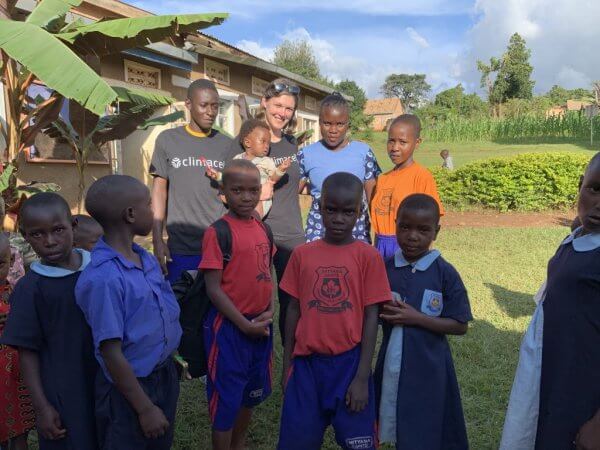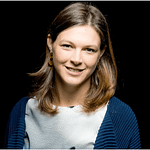
The Next Generation of Philanthropy is Making This One Critical Change
Earlier this month, the Harvard Business Review posted an article written by Philip E. Auerswald, Gabrielle Daines Gay and Efosa Ojomo in which the current opportunity to philanthropic investors was made crystal clear. As quoted from the article, there is a current opportunity for “risk-tolerant, philanthropically motivated investors to provide critical capital to enterprises with capable and creative leadership; a sound business model that addresses real and underserved market need; and the ability to pivot and create vibrant new markets.”
The article went on to highlight that philanthropically motivated organizations and individuals should consider responding to the current global crises “by committing to allocate either 2% of all of their philanthropy, or 2% of assets under their management, to investments in market-creating innovations,” as “2% of aggregate resources to support market-creating innovators is among the highest-leverage investments a society can make.”
Avoid Investing in Projects
When it comes to philanthropic investments, the article described two varying methodologies:
- “Reactive philanthropy, at its best, do no more than return the world to where it was and at its worst, result in distortions or negative unintended consequences.”
- “Transformative philanthropy capitalizes upon such moments to advance societal development in fundamental ways.”
The recommendation was to make investments in support of societal developments as the results produce more impactful outcomes. In addition to focusing on transformative investing, the article made a point to steer investors in the direction of people, not projects. While project-based investing may sound compelling on the surface, the best venture capitalists in the world will tell you to focus early-stage investments in the people and the team. The best idea by the wrong group of people will not produce a significant outcome. It never has, nor will it in the future, and philanthropic investing needs to take the same approach as we look around the world at issues including COVID-19, and the locust crisis in Africa.
The People on a Locust Mission
If the next wave of philanthropic investing is to shift its strategy from focusing on projects and instead investing in people, then the first question to ask is where to begin? Imagine a world in which COVID-19 had not happened, odds are the locust crisis in Africa would be the number one global crisis in the media. This is a multi-billion dollar opportunity. Consider these statistics since January as highlighted in a July article from the Christensen Institute:
- 450 billions locusts have spread across East Africa, the Middle East, and West Asia
- 10% of the global population is at risk of hunger
- Damages this year are expected to surpass $8.5B
Making matters worse, swarms of more than 1 million locusts move from location to location together, and every day, swarms can move more than 100 miles and destroy enough crops to feed 30,000 people. Every day.
If this situation isn’t brought under control immediately, it will become unsolvable for hundreds of millions of people, risking famine, starvation, decimating economies, and ending in utter chaos. For a number of countries in the world, COVID-19 is not the most threatening crisis currently happening. Instead, the number one crisis is hundreds of millions of locusts decimating food supplies.
Earlier in this article we quoted that the future of philanthropic investing, which is being called out at this very moment, needs to focus on “creative leadership” to “create vibrant new markets.” The team at Tomorrow.io is the answer. Why is Tomorrow.io positioned to solve a significant piece of the locust crisis puzzle? Let’s start with the technology. The locust problem simplistically boils down to three core areas of focus.
- Identify the areas where locusts are repopulating and and stop them by spraying pesticides with drones
- Know where existing swarms are traveling next
- Warn communities in advance of locusts arriving so they can harvest their crops and protect food supplies
Using Tomorrow.io, all three of these current issues can be solved in a matter of days. www.tomorrow.io, the World’s Weather Intelligence Platform can identify at a hyperlocal level where locusts are going to repopulate based on predictive weather parameters such as wet and humid conditions, which allows teams to accurately spray pesticides in at-risk areas mitigating repopulation, and avoiding broad pesticide spraying putting people and livestock at risk.
Second, based on wind conditions and predictive wind direction, Tomorrow.io knows where locust swarms are going next, in real-time, and over the course of the next few days.
Finally, Tomorrow.io sends SMS alerts/text messages/emails to the people in the communities at risk of a locust invasion. People receive these alerts with enough time to take action and avoid destruction and devastation.
Invest in the People
The technology sounds impressive, and it really can do everything we just highlighted in a matter of days. But that’s not enough. What about the people? Tomorrow.io is the next generation of the weather industry, and its people are simply the best.
Consider the following:
- www.tomorrow.io has 20+ PhD data scientists building the industry’s only proprietary weather impact data sets and models
- A team of 40+ engineers are 100% dedicated day in and out to turning the proprietary data sets and models into the industry’s first and only software platform and global impact API to integrate into organizations existing systems
- The founders of Tomorrow.io all banded together after serving in the Israeli military for 10+ years, and were helicopter pilots. After their careers, and realizing that weather was the most dangerous element in the air, the founders moved to Boston to attend HBS, MIT, and start Tomorrow.io
When it comes to the company’s all-star roster of customers, we have a saying here at Tomorrow.io – The brands people rely on most, rely on Tomorrow.io:
- On-Demand: Uber, Swiggy, Drizly, Rappi, Via
- Aviation: Delta, United, Jet Blue, AeroMexico, U.S. Air Force
- Energy: SB (SoftBank) Energy, National Grid, IndiGrid
- Technology and Supply Chain: Ford, Porsche, ITS ConGlobal
- Sports and Outdoor: The New England Patriots, The U.S. Open
The company not only runs an enterprise-grade business and a consumer app part of the business, but has also created Tomorrow.io.org, and that’s where our opportunity exists. As the Director of Tomorrow.io.org, Georgie Campbell Flatter has spent a significant amount of time in Africa developing community programs and strategic partnerships.

Under her leadership, Tomorrow.io.org has collaborated with the World Bank, World Meteorological Organization, Red Cross, local farmers, community leaders, Maasai warriors, local governments, and more.
The team is elite, experienced, connected, dedicated, and ready to be the conduit for the next generation of philanthropic titans. The legacy you can leave behind for the next hundred years is crying out for help right now, what will you say back?
